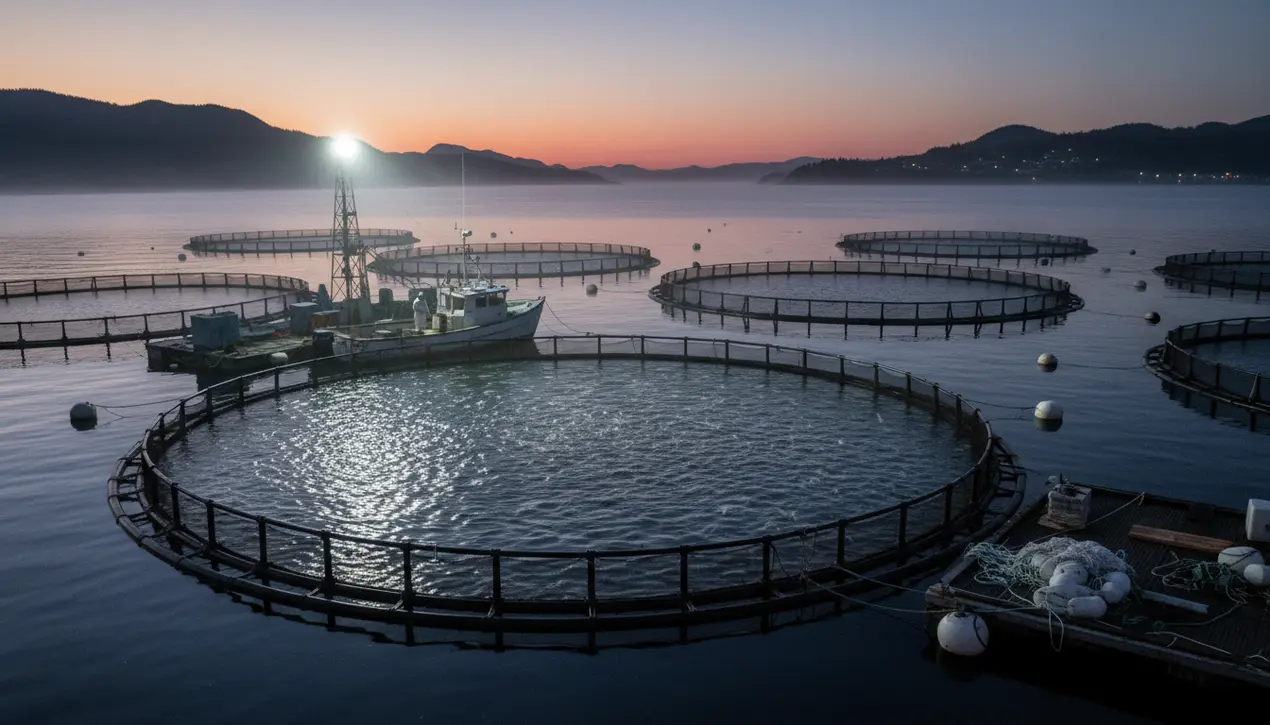
SciencebiologyMarine Biology
Should salmon farming be our future?
RA
Rachel Adams
2 hours ago7 min read
As Earth's population marches toward an estimated 10 billion by 2050, the question of how to feed everyone sustainably is no longer a theoretical exercise but an urgent, practical crisis. Aquaculture, particularly salmon farming, has emerged as a leading contender in this global challenge, promoted as one of the most efficient methods for producing animal protein with a lower terrestrial footprint than cattle or poultry.The industry's growth is staggering; it is the fastest-expanding food production sector globally, a testament to its perceived potential. Yet, beneath the surface of this seemingly elegant solution lies a deeply complex ecological and ethical dilemma, one that marine biologists and conservationists are urgently trying to unravel.The central figure in this drama is the salmon itself, the most popular fish in the American diet, with the average person consuming 3. 2 pounds annually.The critical, and often overlooked, statistic is that over 70 percent of this salmon, amounting to a colossal 3 million tons per year, now originates not from wild, free-flowing rivers but from controlled, densely populated ocean net-pens and land-based recirculating systems. To understand the true cost of this pink fillet on our plates, we must dive into the murky waters of its production.The industry's proponents, like those in the Global Salmon Initiative, argue that modern farming has drastically reduced its environmental impact, focusing on innovations in feed efficiency and disease management. However, the fundamental problems persist like a stubborn tide.The issue of feed is paramount; salmon are carnivorous, and their diet has historically relied on wild-caught fishmeal and fish oil, creating a paradoxical scenario where vast quantities of smaller forage fish are harvested from already stressed marine ecosystems to feed a confined population of predators. While alternatives like soy and algae-based feeds are being developed, they introduce new complications, including deforestation for agriculture and the nutritional adequacy for the farmed fish.Then there is the localized ecological damage. Concentrated waste from these farms—excess feed, feces, and chemical treatments—can accumulate on the seafloor beneath net-pens, creating dead zones devoid of oxygen and life.The threat of disease and parasites, particularly sea lice, is magnified in these crowded conditions, and these pathogens can spread to wild salmon populations migrating nearby, with devastating consequences for their already precarious numbers. Perhaps the most poignant consideration, one that is gaining traction among animal welfare experts, is the experience of the salmon themselves.These are anadromous creatures, evolved for epic migrations across vast oceans and powerful upstream journeys. Confining them to pens, regardless of their size, raises profound questions about their welfare, their ability to express natural behaviors, and the very essence of their being.The path forward is not a simple binary of good versus evil but a tangled web of trade-offs. Do we prioritize the immediate protein needs of a growing global population, accepting the localized environmental costs as a necessary evil? Or do we demand a radical transformation of the industry, investing in more expensive, closed-containment systems that sever the connection to the open ocean, or perhaps shifting consumer habits toward less impactful species? The answer, as in most matters of ecological stewardship, lies not in a single solution but in a mosaic of improved regulations, technological innovation, and a more conscious, informed public. The more we know about the journey of this fish from egg to supermarket, the more responsible we can be in deciding if salmon farming should truly be our future, or if we need to cast our nets for a different, more harmonious way to nourish the world.
#aquaculture
#salmon farming
#sustainability
#food production
#environmental impact
#featured
Stay Informed. Act Smarter.
Get weekly highlights, major headlines, and expert insights — then put your knowledge to work in our live prediction markets.
Related News
Comments
Loading comments...
© 2025 Outpoll Service LTD. All rights reserved.